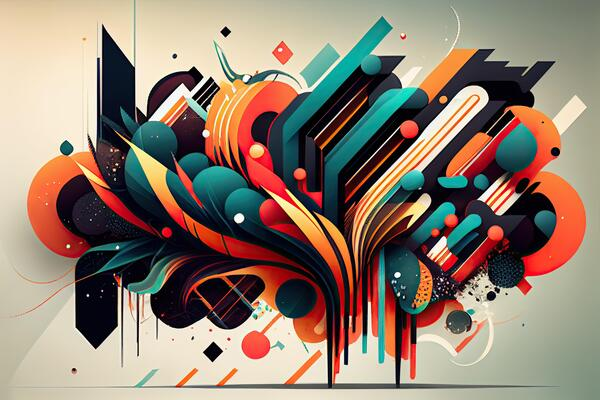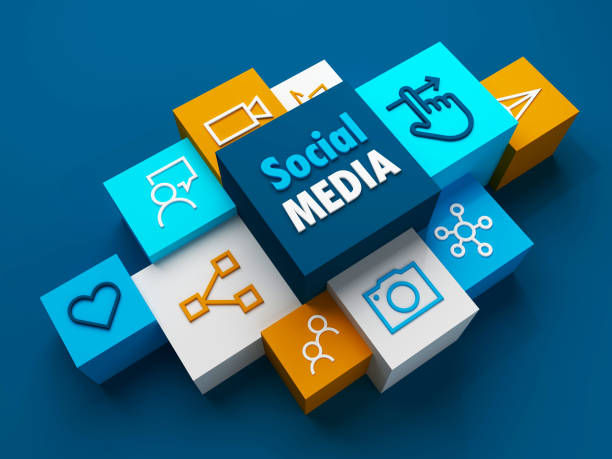Graphic Design
- Muhammad Rustam khan
- Oct 8, 2024
- 5 min read
Updated: Oct 9, 2024
Graphic Design: A Creative Guide for Beginners and Professionals
Graphic is an essential part of visual communication, bringing ideas to life through the use of imagery, typography, color, and layout. In the digital age, the demand for skilled designers of graphics has skyrocketed, making it a crucial field for businesses, media, and individuals alike. This article explores the world of graphics , covering its history, key principles, tools, and future trends.
1. What is Graphic Design?
Graphic is the practice of creating visual content to convey messages. Using typography, imagery, colors, and shapes, designers of graphics develop visual compositions that solve problems and communicate ideas effectively. Graphics can be seen everywhere, from advertisements and logos to websites, brochures, product packaging, and digital interfaces.
2. History of Graphics
The origins of graphics can be traced back to ancient civilizations, with early examples of visual communication appearing in Egyptian hieroglyphs and manuscripts. However, graphics as we know it began to evolve in the late 19th and early 20th centuries, influenced by movements such as Art Nouveau, Bauhaus, and the Swiss Style. These movements emphasized simplicity, clarity, and the use of geometric shapes in design.
The advent of computers and digital tools in the late 20th century revolutionized the field, allowing designers to work more efficiently and experiment with a wider array of styles and techniques.
3. Principles of Graphics
Every successful design follows certain principles to create harmony and balance. These principles guide designers in creating visually appealing and effective compositions:
- Balance: Balance refers to the distribution of visual weight within a design. It can be symmetrical (evenly distributed elements) or asymmetrical (unevenly balanced elements, often creating a more dynamic look).
- Contrast: Contrast is the difference between two elements, such as light and dark colors, large and small shapes, or different fonts. Effective use of contrast draws attention and emphasizes important areas of the design.
- Alignment: Alignment ensures that elements are properly positioned and organized, creating a clean and professional look. It helps guide the viewer’s eye through the design.
- Repetition: Repetition reinforces certain elements and creates consistency within a design. Repeated use of colors, fonts, or shapes makes the design cohesive.
- Proximity: Proximity involves grouping related items together to create a relationship between them. This reduces clutter and improves the overall structure of the design.
- Hierarchy: Hierarchy is the organization of information in a way that leads the viewer's eye to the most important elements first. Using size, boldness, and placement, designers create a clear visual order.
Digital marketing and graphics are closely linked, as visuals play a key role in capturing audience attention and enhancing engagement. Graphics like images, infographics, videos, and animations help communicate messages effectively, making content more appealing and shareable across platforms. Well-designed graphics also support branding, improve user experience, and contribute to higher conversion rates in campaigns, ads, and social media, making them essential for successful digital marketing strategies.
4. Types of Graphic Design
Graphic is a broad field with many specializations. Here are some of the most common types:
- Branding and Logo Design: This involves creating the visual identity of a brand, including the design of logos, color schemes, and brand guidelines.
- Web Design: Web designers focus on creating visually appealing and functional websites. This includes layout design, navigation, user experience (UX), and ensuring compatibility across devices.
- Print Design: Print designers create physical materials such as brochures, magazines, posters, and business cards. This field often requires knowledge of print production processes and color management.
- Packaging Design: Packaging designers focus on designing attractive and functional packaging for products, balancing aesthetics with practicality to enhance the customer experience.
- Motion Graphics: Motion graphics combine graphics with animation. This type of design is often seen in video intros, animated logos, and explainer videos.
- Illustration and Icon Design: Designers in this field create custom illustrations and icons for websites, apps, infographics, and more.
5. Graphic Design Tools and Software
In modern graphics, digital tools play a crucial role in bringing ideas to life. Here are some of the most widely used tools in the industry:
- Adobe Creative Suite: Adobe is the industry standard for graphic software, offering powerful tools like Adobe Photoshop (for image editing), Illustrator (for vector design), and InDesign (for layout design).
- Sketch: Sketch is popular for web and UI design, offering features that make it easier to create wireframes, prototypes, and responsive designs.
- Canva: Canva is a user-friendly tool for beginners. It allows users to create social media graphics, posters, and presentations using pre-designed templates and elements.
- Figma: Figma is a cloud-based design tool that has gained popularity for collaborative design. It’s widely used for interface design, wireframing, and prototyping.
- Procreate: For digital artists and illustrators, Procreate is a powerful drawing and painting app available on the iPad.
6. The Role of Color in Graphics
Color is one of the most important elements in design. It has the power to evoke emotions, set the tone, and establish a brand’s identity. Here are a few ways in which color plays a key role:
- Color Psychology: Colors have different psychological effects on viewers. For example, red is associated with energy and passion, while blue is calming and trustworthy. Understanding color psychology helps designers create designs that evoke the right emotions.
- Color Theory: Designers use the color wheel to choose harmonious color schemes. Monochromatic, complementary, analogous, and triadic color schemes are popular choices depending on the desired effect.
- Branding: Color is closely tied to branding. Consistent use of color across a brand’s materials helps build recognition and trust.
7. Typography in Graphic Design
Typography is the art of arranging text in a way that makes it readable, clear, and visually appealing. Choosing the right fonts and typefaces is a critical part of the design process.
Key typography concepts include:
- Serif vs. Sans-Serif: Serif fonts have small strokes at the ends of letters and are considered more traditional, while sans-serif fonts have clean, modern lines.
- Kerning, Tracking, and Leading: These are terms that refer to the spacing between letters (kerning), words (tracking), and lines of text (leading).
- Font Pairing: Using multiple fonts in a design can create contrast and visual interest. Designers carefully pair fonts to ensure balance and readability.
8. Trends in Graphics
The field of graphics constantly evolves with trends reflecting technological advancements, cultural shifts, and new media formats. Some current trends include:
- Minimalism: Clean, simple designs that focus on essential elements have become popular, particularly in web and app design.
- 3D Design and Typography: 3D elements, including typography, are increasingly being integrated into digital and print designs, creating more immersive visuals.
- Sustainability and Eco-Friendly Design: More designers are incorporating eco-friendly principles, such as using sustainable materials and promoting environmental messages in their designs.
- Bold and Bright Colors: Vibrant, eye-catching colors are making a comeback, often used to draw attention and create memorable visual experiences.
- Geometric Shapes: The use of geometric shapes, lines, and patterns is a rising trend in both digital and print design.
9. Future of Graphic Design
As technology continues to advance, the future of graphics will see a greater fusion of design with emerging technologies. Here are some developments on the horizon:
- Artificial Intelligence (AI): AI-powered tools are already making an impact, assisting designers with tasks like logo generation, layout suggestions, and even content creation.
- Augmented Reality (AR) and Virtual Reality (VR): AR and VR are opening new avenues for interactive design, where users can engage with products and content in immersive digital environments.
- Automation in Design: Automation tools are expected to streamline repetitive tasks, allowing designers to focus more on creativity and innovation.
Graphic is a constantly evolving field that plays a significant role in shaping how we interact with the world. Whether you're a beginner or a seasoned professional, understanding the core principles of design, staying updated on trends, and mastering the right tools are key to success. As technology continues to transform the industry, designers must be adaptable and ready to embrace new possibilities.
Get information about Social Media Marketing Click here!















Comments